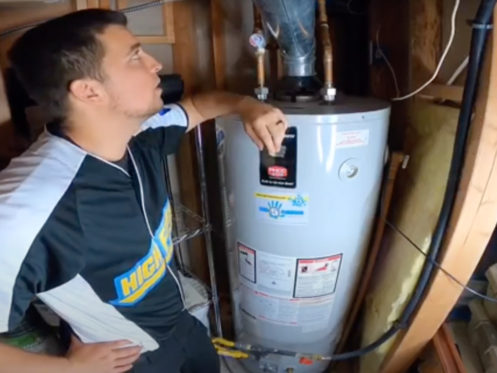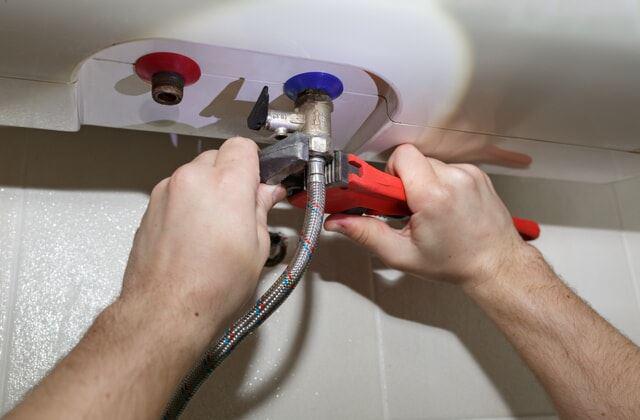Maintaining Your Home's Hot Water System: Essential GuidelinesSimple Steps to Caring for Your Home's Hot Water System
Maintaining Your Home's Hot Water System: Essential GuidelinesSimple Steps to Caring for Your Home's Hot Water System
Blog Article
Nearly everybody is bound to have their own ideas about How to Maintain a Hot Water Heater in a Few Simple Steps.

Hot water is necessary for day-to-day comfort, whether it's for a rejuvenating shower or cleaning recipes. To guarantee your warm water system runs successfully and lasts much longer, regular maintenance is essential. This post supplies sensible pointers and understandings on exactly how to preserve your home's hot water system to avoid disruptions and costly fixings.
Intro
Maintaining your home's hot water system could seem difficult, yet with a couple of simple actions, you can ensure it operates smoothly for years ahead. This overview covers every little thing from recognizing your hot water system to DIY upkeep pointers and recognizing when to hire professional assistance.
Value of Maintaining Your Hot Water System
Routine maintenance not only extends the life expectancy of your hot water system but also guarantees it runs effectively. Ignoring upkeep can cause reduced performance, greater power expenses, and also early failure of the system.
Indications Your Hot Water System Needs Upkeep
Understanding when your hot water system needs focus can stop major concerns. Keep an eye out for signs such as irregular water temperature level, unusual sounds from the heating system, or corroded water.
Purging the Water Heater
Flushing your hot water heater gets rid of debris accumulation, enhancing efficiency and prolonging its life.
Checking and Replacing Anode Rods
Anode poles protect against deterioration inside the storage tank. Inspecting and changing them when worn is important.
Facility Concerns Needing Professional Aid
Instances consist of major leaks, electric issues, or if your water heater is constantly underperforming.
Routine Professional Upkeep Advantages
Specialist upkeep can consist of complete evaluations, tune-ups, and ensuring conformity with security standards.
Evaluating and Changing Temperature Settings
Changing the temperature setups makes sure optimal efficiency and security.
DIY Tips for Upkeep
You can carry out several maintenance jobs yourself to maintain your hot water system in leading condition.
Looking for Leakages
On a regular basis inspect pipelines and connections for leakages, as these can lead to water damages and higher costs.
Comprehending Your Warm Water System
Before diving right into upkeep tasks, it's practical to understand the standard parts of your hot water system. Typically, this consists of the water heater itself, pipelines, anode rods, and temperature controls.
Month-to-month Upkeep Tasks
Routine month-to-month checks can help capture small issues prior to they rise.
Testing Pressure Alleviation Valves
Examining the stress safety valve ensures it works correctly and stops too much stress build-up.
Insulating Pipes
Protecting warm water pipelines minimizes warmth loss and can conserve energy.
When to Call a Specialist
While DIY maintenance is helpful, some concerns call for professional competence.
Verdict
Regular upkeep of your home's warm water system is crucial for efficiency, longevity, and expense financial savings. By following these tips and knowing when to look for specialist assistance, you can make sure a reliable supply of hot water without unexpected interruptions.
How to Maintain an Instant Hot Water Heater
Before tinkering with your hot water heater, make sure that it’s not powered on. You also have to turn off the main circuit breaker and shut off the main gas line to prevent accidents. Also turn off the water valves connected to your unit to prevent water from flowing into and out of the appliance. 2. When you’re done, you have to detach the purge valves’ caps. These look like the letter “T” and are situated on either side of the water valves. Doing so will release any pressure that has accumulated inside the valves while at the same time avoid hot water from shooting out and burning your skin. 3. When the purge valves’ caps are removed, you have to connect your hosing lines to the valves. Your unit should have come with three hoses but if it didn’t, you can purchase these things from any hardware or home repair shops. You can also get them from retail stores that sell water heating systems. Read the user’s manual and follow it to complete this task properly. When the hosing lines are connected, open the purge port’s valves. 4. You should never use harsh chemical cleaners or solutions when cleaning your unit. Make use of white vinegar instead. It should be undiluted and you’ll probably use about 2 gallons. 5. Now flush your water heater. This task should probably take about 40 minutes. We can’t give you specific directions for this because the procedure is carried out depending on the type, model and brand of your heater. With that being said, refer to the user’s manual. 6. When you’re done draining the unit, you have to turn off the purge port valves again. Remove the hosing lines that you earlier installed on each of the water valves. Put the valve caps (purge port) back in their respective places and be very careful so as not to damage the rubber discs that are found inside these caps. 7. Now that everything’s back in place, check your user’s manual again to find out how to reactivate your water heating system. 8. Once it is working, turn one of your hot water faucets on just to let air pass through the heater’s water supply pipes. Leave the tap on until water flows smoothly out of it. https://www.orrplumbing.com/blog/2014/september/how-to-maintain-an-instant-hot-water-heater/

As a reader about Tips on Maintaining a Water Heater, I was thinking sharing that excerpt was sensible. Loved our article? Please share it. Let another person check it out. I thank you for your readership.
Go Services Report this page